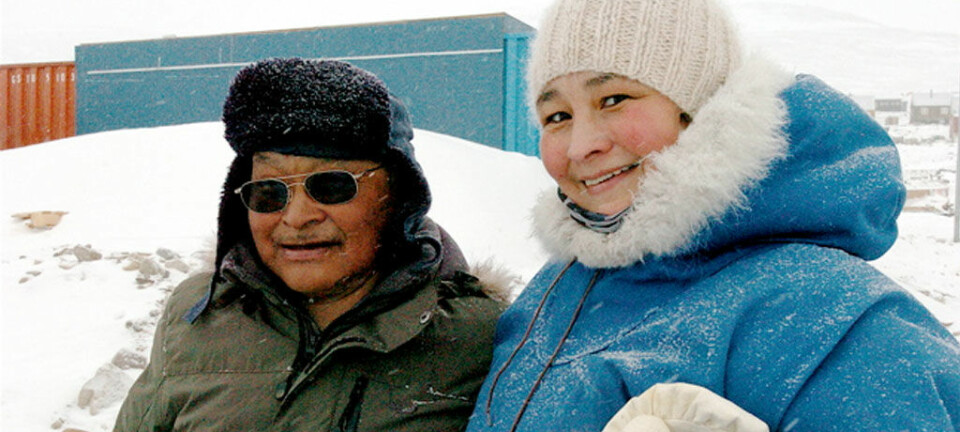
Greenland in numbers: eight key statistics to understand the world’s largest island
GREENLAND: The world’s largest island nation is emerging as education, life expectancy, and immigration are increasing. Learn more about Greenland from these key statistics.
Kalaallit Nunaat--popularly known as Greenland--is the world’s largest island, taking up a whopping 2,180,000 square kilometres of land in the Arctic.
For some, Greenland is inconceivably large. And along with the Faeroe Islands, it actually makes The Kingdom of Denmark the world’s 12th largest country.
Discover more about this vast island nation through these eight key statistics.
1: Greenland has the world’s lowest population density
According to the World Bank, Greenland has the lowest population density out of all other countries, with a population of 55,847 (as of 1st January 2016) spread out over 2,180,000 square kilometres.
That corresponds to 39 square kilometres for each Greenland citizen and a population density of 0.025 people per square kilometre. This increases to 0.14 square kilometres if only the habitable areas are considered (i.e. minus the ice sheet).
But even then, Greenland retains its status as the world’s least densely populated nation, second only to Mongolia at 1.87 people per square kilometre.
2. Greenlanders are becoming urbanites
Even though Greenland is built upon a seemingly unending variety of nature, its citizens are becoming increasingly urbanised. In 1977, 33 per cent of all Greenlanders lived in ‘rural’ areas. This shrank to just 14 per cent in 2015.
Social scientist Birger Poppel, from Ilisimatusarfik (University of Greenland), Nuuk, underlines that this does not necessarily represent people moving from the countryside into towns.
"It’s not so much that Greenlanders move from rural to urban areas. It’s more that they move from a village or small town to a bigger city,” says Poppel.
Greenland’s urban areas are made up of 18 towns, about 60 smaller settlements, and a number of sheep farms throughout southern Greenland.
3: Greenlanders are not having enough children
In 2014, Greenland’s fertility rate was 2.01 children per woman, which was less than the 2.1 rate needed to maintain the current level of population.
Adding to this, Greenland has a high abortion rate in comparison with other Nordic countries. In 2012, there were 53.4 abortions per 1000 women (aged between 15 and 49 years). This compares to just 12.4 in Denmark, for example.
Between 2004 and 2008, more children were aborted than were born in Greenland, however this started to change after 2009.
4: Low level of education, but it is increasing
Even though the population’s general level of education is rather low in comparison with other Nordic nations, there have been signs of progress in the last 10 years.
Today, 36 per cent of the population are educated beyond high school level, compared to 30 per cent 10 years ago. This compares with 67 per cent in Denmark, although this is not really a fair comparison, says Poppel.
“It’s not fair to say that an experienced fisherman doesn’t have an education. He has acquired some real skills in practice and he works with his education, he just doesn’t have a piece of paper to show it," he says.
Greenland’s education statistics only include people who received state support so the actual numbers could in fact be higher.
5: Growing investment in education and training
Expansion of higher education was no accident. Greenland’s home rule Government has focused on education and education spending accounts for nearly 14 per cent of Greenland's GDP. In comparison, the EU average is about 5.3 percent.
6: Economic growth is shrinking
Greenland’s GDP per capita was around 100,000 Danish kroner (DKK) in 2014 (equivalent to about US$15,285 today). This represents a small decline on previous years, when adjusted for inflation.
According to figures from Greenland Statistics, GDP fell by 1.6 percent in 2014. This was the third year in row where the economy was in decline, and was attributed to declining productivity in the construction industry.
In absolute terms, Greenland had a GDP of 13.7 billion DKK in 2014 (around US$2 billion). This compares with 1,943 billion DKK in Denmark (around US$297 billion).
7: Life expectancy is increasing
Life expectancy has risen by almost five years for both men and women in Greenland over the past 20 years.
A newborn baby boy can expect to live to the age of 68.5 in Greenland, while a women can expect to live until 73.7.
This compares to 78 years for Danish men and 81.9 years for Danish women.
8: Immigration from Asia is on the rise
Greenland’s demographics have changed significantly since the late 1970s.
While the number of Swedish and Norwegian immigrants has fallen, the number of new arrivals from Iceland, Thailand, and the Philippines, has risen sharply.
-------------
Read the Danish version of this article on Videnskab.dk
Translated by: Catherine Jex












